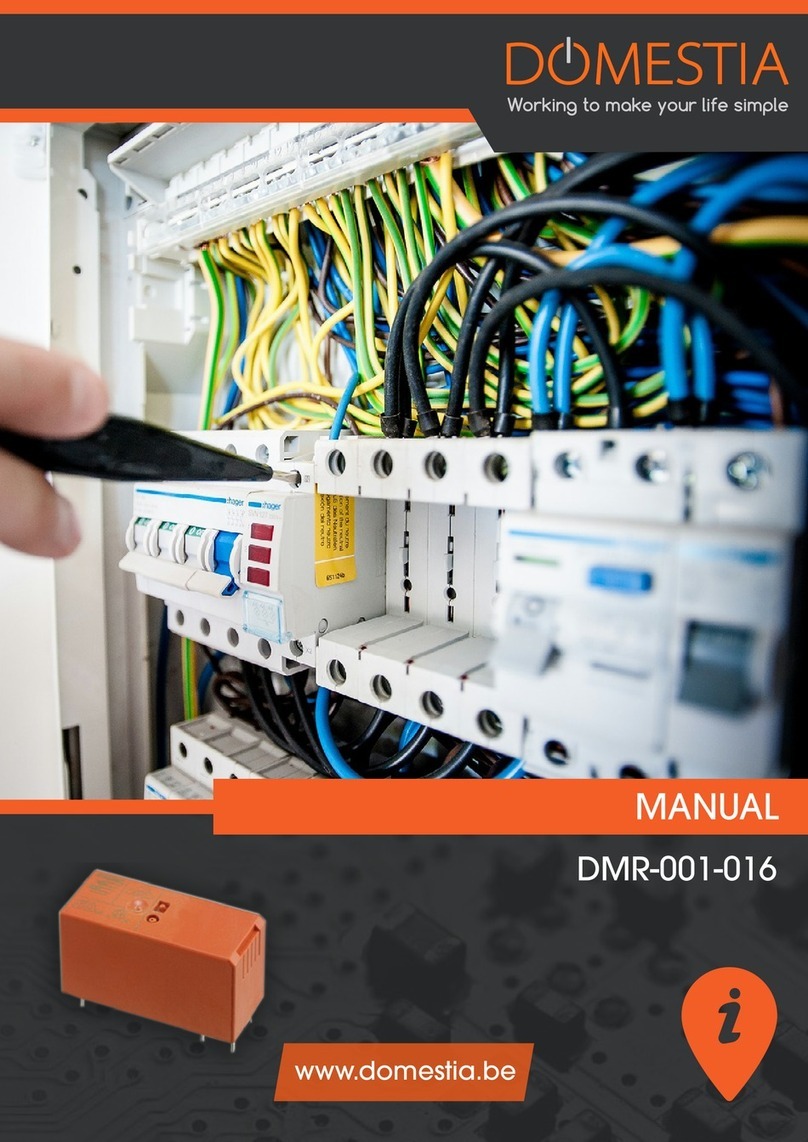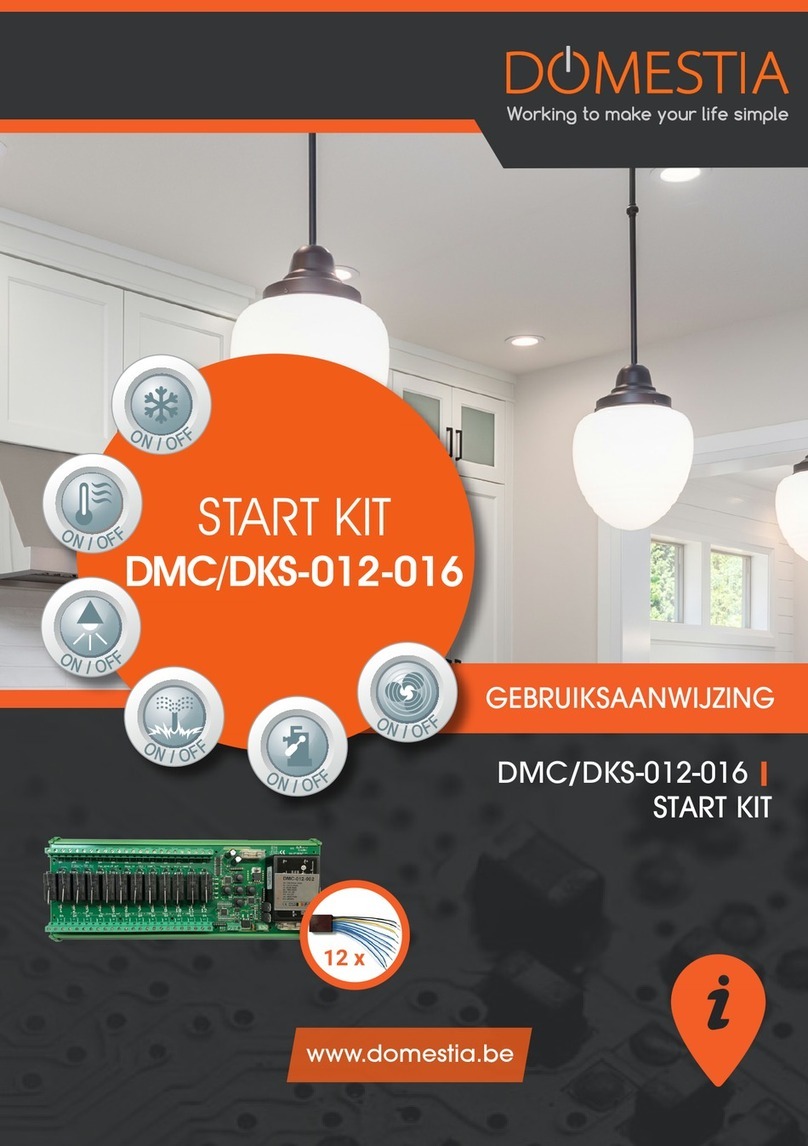
8
4.3.2. LOWER SELECT MODE
Starting from the Lower All mode (see above), press once on the DOWN button. LEDs
A, B, C, D and E will then be lit, together with all the LEDs from the previous configura-
tion (by default: all).
Use the LEFT and RIGHT buttons to choose the shutters to be lowered. Press on the
CENTRE button to select or deselect a shutter.
To leave the Lower All mode, press the UP button as many times as necessary to return
to the OPERATING mode (LEDs A and E lit).
4.4. RAISE ALL OR SELECT MODE PROGRAMMING
Programming the Raise All function is identical to the method used to program the Lower
All function. To access it, press the DOWN button in Operating mode until LEDs B, D and E
are lit.
4.5. PROGRAMMING A LOWERING GROUP
At the start of the Functional mode (LEDs A and E on) press the DOWN key, so that LEDs C,
D and E are on and LED 1 or 2 flashes to correspond to the number of the lowering group.
Then validate with the CENTER key.
You must then go to the room concerned and press the PB which will have to control the
group. By pressing the chosen BP, the power supply is activated, for the time of the push,
on all descents: this means that the addressing is recorded, Repeat the operation for
each BP that you wish to associate with this same operation.
To add or remove certain descents from the selected group, press the DOWN key once.
At this time, LEDs A, C, D and E are on as well as all the LEDs of the previous configuration
(by default: all descents). You can move using the LEFT and RIGHT keys to choose the
descents. To select or deselect a descent, press the CENTER key.
To exit the descent selection, press the UP key once.
To exit Group mode, press the CENTER key once, and then press the UP key as many times
as necessary to return to Functional mode (LEDs A and E on).
4.6. PROGRAMMING A RAISING GROUP
At the start of the Functional mode (LEDs A and E on) press the DOWN key, so that LEDs B,
C and E are on and LED 1 or 2 flashes to correspond to the number of the raising group.
Then validate with the CENTER key.
You must then go to the room concerned and press the PB which will have to control
the group. By pressing the chosen PB, the power supply is activated, for the duration of
the push, on all climbs: this means that the addressing is saved. Repeat the operation for
each PB that you want to associate with this same operation.
To add or remove certain climbs from the selected group, press the DOWN key once. At
this time, LEDs A, B, C and E are on
as well as all the LEDs of the previous configuration (default: all). You can move using the
LEFT and RIGHT keys to choose the climbs. To select or deselect a climb, press the CENTER
key. To exit the selection of climbs, press the UP key once.






























